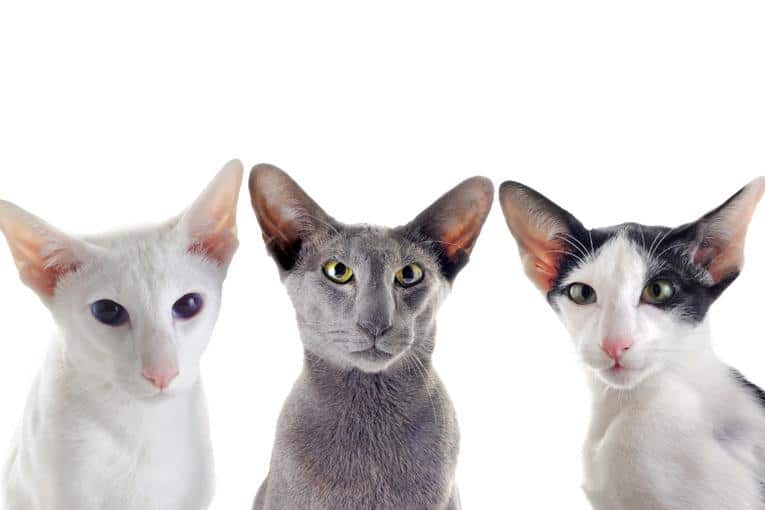Welcome to our comprehensive guide on the Oriental cat breed, an exquisite breed renowned for their elegance, intelligence, and social nature. This guide will take you on an in-depth exploration to discover everything there is to know about this unique breed, from their vibrant history tracing back to Thailand, to their expressive temperament and unique characteristics.
We’ve included numerous stunning photos to help you visualize these beautiful creatures and their sleek, muscular physique, their almond-shaped eyes, and their large, pointed ears, which are signature traits of the breed.
The Oriental cat is a breed that is as fascinating as it is beautiful, and the key to understanding them is knowing about their health and care requirements.
Our guide provides detailed information about their health considerations, dietary needs, grooming regimen, and physical exercise requirements to help you provide the best care for an Oriental cat. We will also delve into the subject of their longevity and any genetic predisposition towards specific health conditions.
But we’ve not stopped at just that. We’ve also included interesting articles about the Oriental cat breed, discussing various aspects including grooming tips, behavioral traits, training, and more.
Additionally, if you’re struggling to find the perfect name for your Oriental cat, we’ve compiled a list of unique names, inspired by their distinctive features and personality. So whether you’re a potential cat parent, a new owner, or simply a cat enthusiast, this guide is your one-stop resource for everything about Oriental cats.
Introduction to Oriental Cats: A Unique Breed
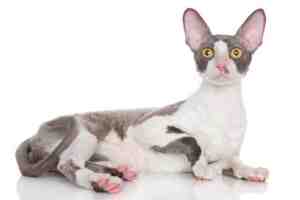 Oriental cats are a unique and fascinating breed that captivates cat lovers with their striking appearance and distinctive personality. Known for their sleek bodies, almond-shaped eyes, and large ears, Oriental cats are often referred to as the “Siamese in fancy dress.” They are a result of crossbreeding Siamese cats with other breeds, such as Abyssinians and Russian Blues, to create a breed with a wider range of coat colors and patterns.
Oriental cats are a unique and fascinating breed that captivates cat lovers with their striking appearance and distinctive personality. Known for their sleek bodies, almond-shaped eyes, and large ears, Oriental cats are often referred to as the “Siamese in fancy dress.” They are a result of crossbreeding Siamese cats with other breeds, such as Abyssinians and Russian Blues, to create a breed with a wider range of coat colors and patterns.
The Origin and History of Oriental Cats
The history of Oriental cats can be traced back to the mid-20th century when breeders in the United States and Britain began experimenting with crossbreeding Siamese cats. The goal was to create a breed that retained the elegance and grace of the Siamese but with a wider variety of coat colors and patterns. The first Oriental cats were recognized as a separate breed in the 1970s, and since then, they have gained popularity worldwide.
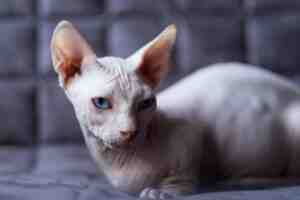
Understanding the Distinctive Personality Traits of Oriental Cats
Oriental cats are known for their extroverted and affectionate nature. They are highly social and thrive on human companionship, often forming strong bonds with their owners. These cats are intelligent and curious, always eager to explore their surroundings and engage in interactive play. They are also vocal and will not hesitate to express their opinions through their distinctive meows.
Oriental cats are often described as being dog-like in their behavior. They are known to follow their owners around the house, greet them at the door, and even play fetch. Their high energy levels make them excellent playmates for children and other pets. However, their need for constant stimulation and attention means they may not be suitable for those who are away from home for long periods.
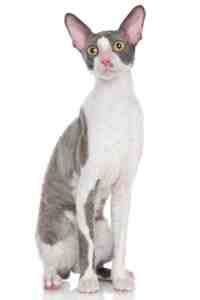 The Physical Characteristics of Oriental Cats
The Physical Characteristics of Oriental Cats
Oriental cats have a slender and muscular body, with long legs and a graceful gait. Their almond-shaped eyes can be blue, green, or odd-eyed, adding to their striking appearance. They come in a wide range of coat colors and patterns, including solid, tabby, tortoiseshell, and colorpoint. Their short, fine coat requires minimal grooming, making them relatively low-maintenance in terms of grooming needs.
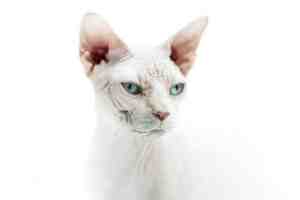 The Health and Lifespan of Oriental Cats
The Health and Lifespan of Oriental Cats
Oriental cats are generally healthy and have a lifespan of 12 to 15 years. However, like any breed, they are prone to certain health issues. One common problem is dental disease, so regular dental care, including brushing their teeth and providing dental treats, is essential. They may also be susceptible to respiratory issues, such as asthma and upper respiratory infections, so it’s important to keep their environment clean and free from irritants.
The Ideal Environment for an Oriental Cat
Oriental cats thrive in a stimulating and enriching environment. They require plenty of mental and physical stimulation to prevent boredom and destructive behavior. Providing them with interactive toys, scratching posts, and vertical spaces, such as cat trees, will help keep them entertained. They also enjoy having access to outdoor spaces, but it’s important to ensure their safety by providing a secure and enclosed area.
Essential Care Tips for Oriental Cats
To keep your Oriental cat happy and healthy, regular veterinary check-ups are crucial. Vaccinations, flea and tick prevention, and deworming should be part of their routine healthcare. Additionally, providing a balanced and nutritious diet is essential for their overall well-being. Consult with your veterinarian to determine the appropriate feeding schedule and portion sizes for your Oriental cat.
Feeding and Nutrition: What Does an Oriental Cat Need?
Oriental cats have high energy levels and a fast metabolism, so they require a diet that is rich in protein and low in carbohydrates. Look for high-quality cat food that lists a named meat source as the first ingredient. Avoid foods that contain fillers, artificial additives, and excessive carbohydrates. Feeding your Oriental cat small, frequent meals throughout the day will help satisfy their energy needs and prevent obesity.
Common Health Issues in Oriental Cats and How to Prevent Them
While Oriental cats are generally healthy, there are a few health issues that they may be prone to. One such issue is amyloidosis, a condition that affects the liver and kidneys. Regular veterinary check-ups and blood tests can help detect any early signs of this condition. Dental disease is another common problem, so regular dental care, including brushing their teeth and providing dental treats, is essential. Additionally, keeping their environment clean and free from irritants can help prevent respiratory issues.
Conclusion: The Joy and Responsibility of Owning an Oriental Cat
Owning an Oriental cat can be a rewarding and fulfilling experience. Their unique personality, striking appearance, and playful nature make them a delightful addition to any household. However, it’s important to remember that owning a cat, regardless of the breed, comes with responsibilities. Providing proper care, attention, and a stimulating environment is crucial to ensure the well-being and happiness of your Oriental cat. With the right care and love, your Oriental cat will bring you years of joy and companionship.

